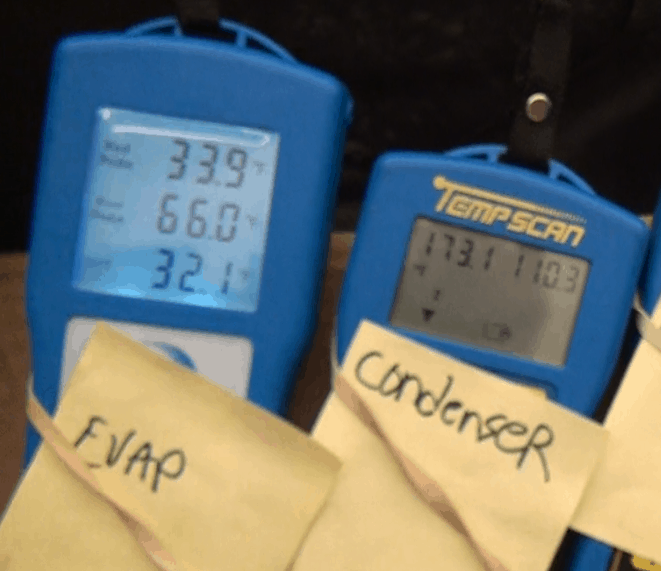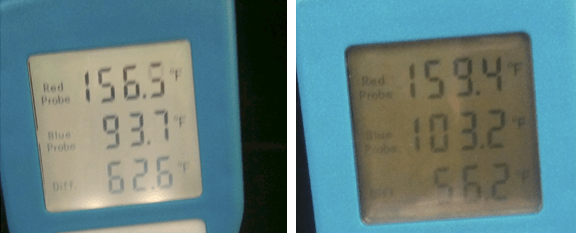Focus on the condenser!
By Richard Hawkins, MACS Contributor
In last week’s article, we focused on applying temperature testing to an evaporator in an orifice tube system. In it we illustrated how and why a low liquid level in the evaporator can cause a large temperature differential between the inlet and outlet. We also indicated how and why raising the liquid level will cause the temperature differential to decrease. Now it is time to focus on the condenser.
There has been some information written over the years that indicates that the condenser temperature differential on both orifice tube and expansion valve systems should be in the range of about 20° to 50°. That information pointed out that a temperature differential of greater than 50° would point toward either a refrigerant undercharge or a restricted condenser. A temperature differential of less than 20° would point toward a refrigerant overcharge or lack of heat transfer. Note: This is assuming that there are not any other problems in the system.
Based on some testing we have done in recent years, that information seems to have been written about systems that use fixed displacement compressors as our tests confirmed that altering the refrigerant charge on those systems can have a dramatic effect on the temperature differential. See pictures #1 below and #2 below.
However, vehicles with variable output compressors (especially electronically controlled variable displacement units) will often have condenser inlet and outlet temperature differentials which fall outside of those ranges. We are talking about perfectly operating systems with the proper charges, not systems with problems.

A temperature test taking place on an orifice tube system with a fixed displacement compressor operating with the correct charge. The 1.3° differential on the evaporator is acceptable and the 39.2° differential on the condenser falls in the 20° to 50° range which was referenced above.

The same system being tested a few minutes later with the charge having been reduced by 25%. The evaporator differential increased to a huge 32.1° and the condenser differential increased to 62.8° which is well outside of the 50° which was referenced above.
I have personally tested numerous low mileage vehicles with electronically controlled variable displacement compressors which had properly charged, perfectly operating systems and found the condenser differentials to be in ranges of about 55° to 75°.
MACS also did test on some other vehicles with electronically controlled variable displacement compressors with systems which were properly charged and operating perfectly and found very low condenser temperature differentials (in the 10° to 15° range). With this being the case, it is recommended that extreme caution be utilized when temperature testing these systems and arriving at a diagnostic conclusion and considering replacing a condenser. See picture #3 below.

Condenser temperature differentials like these are often encountered on properly charged perfectly operating systems that use electronically controlled variable displacement compressors.
One of the most common questions asked in tech line calls is: How much refrigerant is in that system you are working on? Check back in next week as we cover some interesting answers to that question.

Leave a Reply